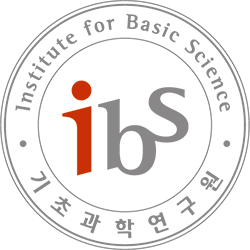Invited Speakers
- Jeong Han Kim (김정한), KIAS, Seoul
- Martin Balko, Charles University, Prague
- Dániel Gerbner, Alfréd Rényi Institute of Mathematics, Budapest
- Cory T. Palmer, University of Montana, Missoula
- Boram Park (박보람), Ajou University
- Dong Yeap Kang (강동엽), KAIST
Schedule
Feb. 11, 2019, Monday
1:30pm-2:20pm Jeong Han Kim: Entropy and sorting
2:20pm-3:10pm Cory T. Palmer: Generalized Turán problems – Berge hypergraphs
Coffee Break
4:00pm-4:50pm Martin Balko: Ramsey numbers of edge-ordered graphs
4:50pm-5:40pm Dong Yeap Kang: On the rational Turán exponents conjecture
Banquet
Feb. 12, 2019, Tuesday
9:30am-10:20am Boram Park: Sum-free set problem on integers
Coffee Break
11:00am-11:50am Dániel Gerbner: Generalized Turán problems – counting subgraphs
Lunch
We plan to provide meals to all participants and provide a room at a near-by hotel for invited speakers and selected participants. Please register in the following form below by January 28, Monday; please register early if you want to receive the support for the accommodation.
Abstracts
Jeong Han Kim (김정한), Entropy and Sorting
We reconsider the old problem of sorting under partial information, and give polynomial time algorithms for the following tasks: (1) Given a partial order P, find (adaptively) a sequence of comparisons (questions of the form, “is x < y?”) which sorts ( i.e., finds an unknown linear extension of) P using O(log(e(P))) comparisons in worst case (where e(P) is the number of linear extensions of P). (2) Compute (on line) answers to any comparison algorithm for sorting a partial order P which force the algorithm to use Ω(log(e(P))) comparisons. (3) Given a partial order P of size n, estimate e(P) to within a factor exponential in n. (We give upper and lower bounds which differ by the factor $n^n /n!$.) Our approach, based on entropy of the comparability graph of P and convex minimization via the ellipsoid method, is completely different from earlier attempts to deal with these questions.
Joint work with J. Kahn.
Cory T. Palmer, Generalized Turán problems – Berge hypergraphs
Let $F$ be a graph. We say that a hypergraph $H$ is a Berge-$F$ if there is a bijection $f : E(F) \rightarrow E(H )$ such that $e \subseteq f(e)$ for every $e \in E(F)$. Note that Berge-$F$ actually denotes a class of hypergraphs. The maximum number of edges in an $n$-vertex $r$-graph with no subhypergraph isomorphic to any Berge-$F$ is denoted $\operatorname{ex}_r(n,\textrm{Berge-}F)$. Observe that when $r=2$, then a Berge-$F$ is simply the graph $F$ and thus again we! are investigating the Tur\’an function $\operatorname{ex}(n,F)$.
In this talk we will survey results on the function $\operatorname{ex}_r(n,\textrm{Berge-}F)$ for various graphs $F$. We will also describe several interesting open problems.
Martin Balko, Ramsey numbers of edge-ordered graphs
An edge-ordered graph is a graph with linearly ordered set of edges. We introduce and study Ramsey numbers of edge-ordered graphs, called edge-ordered Ramsey numbers. We prove some basic properties of these numbers for general edge! -ordered graphs and we provide some stronger estimates for special classes of edge-ordered graphs. We also pose some new open problems and compare edge-ordered Ramsey numbers with the standard Ramsey numbers of graphs and with ordered Ramsey numbers, which are Ramsey numbers for graphs with linearly ordered vertex sets.
Joint work with Mate Vizer.
Dong Yeap Kang (강동엽), On the rational Turán exponents conjecture
The extremal number ${\rm ex}(n,F)$ of a graph $F$ is the maximum number of edges in an $n$-vertex graph not containing $F$ as a subgraph. A real number $r \in [1,2]$ is realisable if there exists a graph $F$ with ${\rm ex}(n , F) = \Theta(n^r)$. Several decades ago, Erdős and Simonovits conjectured that every rational number in $[1,2]$ is realisable. Despite decades of effort, the only known realisable numbers are $1,\frac{7}{5},2$, and the numbers of the form $1+\frac{1}{m}$, $2-\frac{1}{m}$, $2-\frac{2}{m}$ for integers $m \geq 1$. In particular, it is not even known whether the set of all realisable numbers contains a single limit point other than two numbers 1 and 2.
We discuss some recent progress on the conjecture of Erdős and Simonovits. First, we show that $2 – \frac{a}{b}$ is realisable for any integers $a,b \geq 1$ with $b>a$ and $b \equiv \pm 1 ~({\rm mod}\:a)$. This includes all previously known ones, and gives infinitely many limit points $2-\frac{1}{m}$ in the set of all realisable numbers as a consequence.
Secondly, we propose a conjecture on subdivisions of bipartite graphs. Apart from being interesting on its own, we show that, somewhat surprisingly, this subdivision conjecture in fact implies that every rational number between 1 and 2 is realisable.
This is joint work with Jaehoon Kim and Hong Liu.
Boram Park (박보람), Sum-free set problem on integers
For an abelian group $G$, a set $A \subset G$ is sum-free if there are no $x, y, z \in A$ such that $x + y = z$. Sum-free sets was initiated by Schur (1916) by an attempt to prove the famous Fermat’s Last Theorem. Since then, there have been intensive and fruitful research in the field of additive combinatorics. One of great interest in the study of sum-free sets is to consider sum-free subsets of a set of integers, which has attracted a significant attention in the literature over the years.
In this talk, some recent results on sum-free sets of integers are discussed. Then we present a result on $k$-sum $\bf{n}$-free set, where $\bf{n}$ is an $n$-dimensional integer vector. The work is based on joint work with Ilkyoo Choi and Ringi Kim.
Dániel Gerbner, Generalized Turán problems – counting subgraphs
Given two graphs $H$ and $F$, our goal is to determine the maximum number of copies of $H$ in an $F$-free graph on $n$ vertices. The systematic research of these problems was initiated (after several sporadic results) by Alon and Shikhelman. I describe several results of mine in this area, with different sets of co-authors.
Joint work with Ervin Győri, Abhishek Methuku, Cory Palmer and Mate Vizer.

